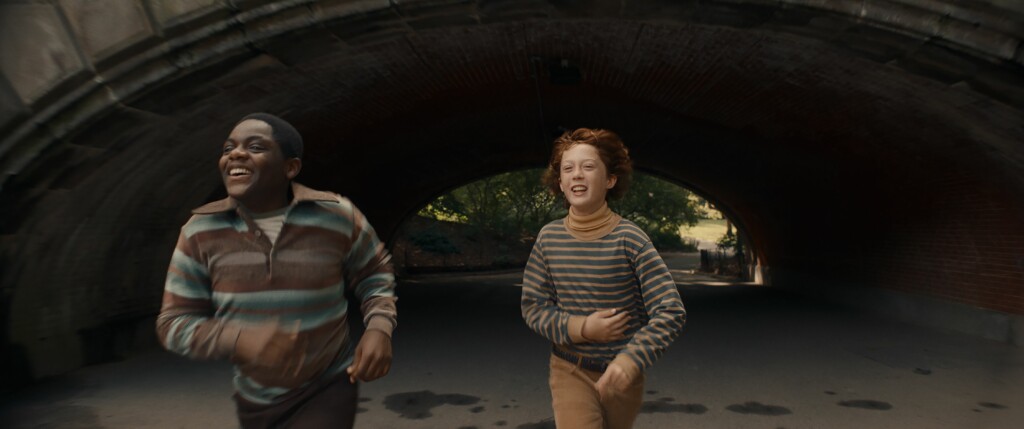
In the mid-1980s, the Queens neighborhood of New York City was under the hegemony of real estate developer Fred Trump, father of Donald Trump, the future president of the United States. A teenager studies at Kew-Forest School, where Trump’s father sits on the school’s board of directors and Donald Trump is an alumnus.
James Gray returns to the Croisette with a rather intimate film for him. The film was preceded by a reputation, that of corresponding in its intentions to what Paul Thomas Anderson, Alfonso Cuaron, or Kenneth Brannagh could do recently – respectively with Licorice, Roma, or Belfast), or before them the Coen brothers (A serious man): a « back to basics » film, which examines the family terrain to better bring out the components that will lead to the trajectory of the author, hero in spite of himself of a show that he will secretly keep within him, and will guide his motivation « To Make It ». Somewhere, a form of prequel to the American Dream, tested then told. Gray comes out of it honorably, in our eyes much better than Cuaron falsely maudlin, or Brannagh too attached to a rather dated overall picture, lacking relief, and in this, his work is closer to that of Anderson or the Coens, marked by sincerity and a work against their own modesty.
With Armageddon Time, he finds accuracy in the eyes of this young actor, chosen to interpret Paul Graff, acronym of James Gray. At his side, Anne Hathaway takes on the role of the devoted and badly treated mother with just as much realism, while Anthony Hopkins abandons his dark and terrifying face to show us a great father who holds the whole family together, hyper-protective, tender, sensitive and attentive. Without the excellence of these different interpretations, Gray would probably have served us an artificial, falsely sensational story.
Drawing from his past, with a certain courage (to look at himself in the mirror), but also to attack head-on the figure of his father (violent, uninteresting, lacking in finesse and charisma) or the dominant thinking in the wealthy New York circles, the snobbery, discipline and conservatism, racism, especially within the private schools in New York – where Jewish children, wealthy – the Trump cites among others, destined to form the economic elite of the nation -, but also a certain cowardice (the criticism, acerbic as it could be in the best James Gray – these early films) offering little nuance, or 360 ° points of view. Gray does not fish here either in the falsely moving, he uses the music with a certain restraint, to better refocus on his main character, the young Paul Graff, touching in his attitude, with apparent fragility. We did not mention it until now, but one of the references to which we must attach Armageddon Time is to be found in the greatest classic of the French New Wave, not to say one of its founding films, The 400 Blows.
The 400 Blows, a la James Gray, or a la Paul Graff, depending on whether it’s more American or more New York, but the psychological material specific to the spectator’s identifications (and to his emotion) shares many common points with Truffaut’s masterpiece. The artist is built in the difficulty, in the rebellion against it, by sensitive act, and the artists – perhaps those who succeed, but probably also those who fail – follow their way, with determination, sometimes erring, building themselves by example and error. A pretty lesson of life that James Gray tries to transmit to us today.
